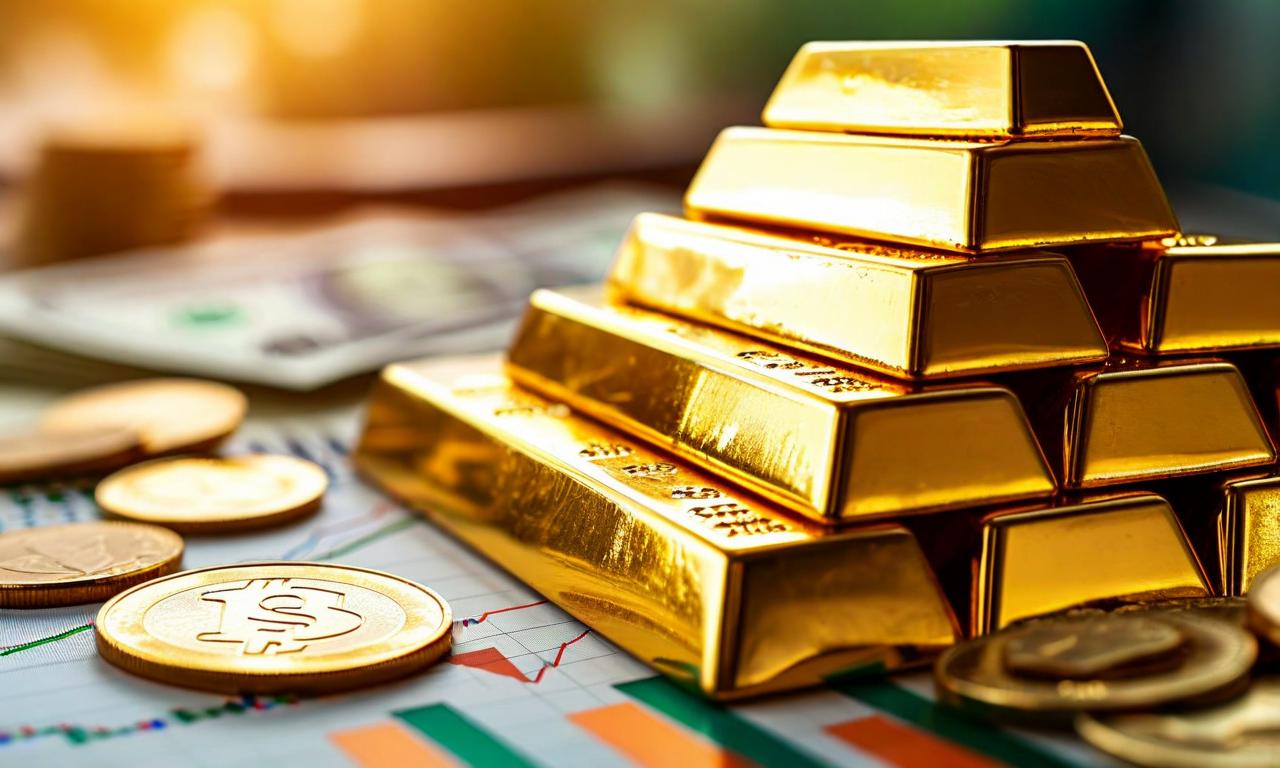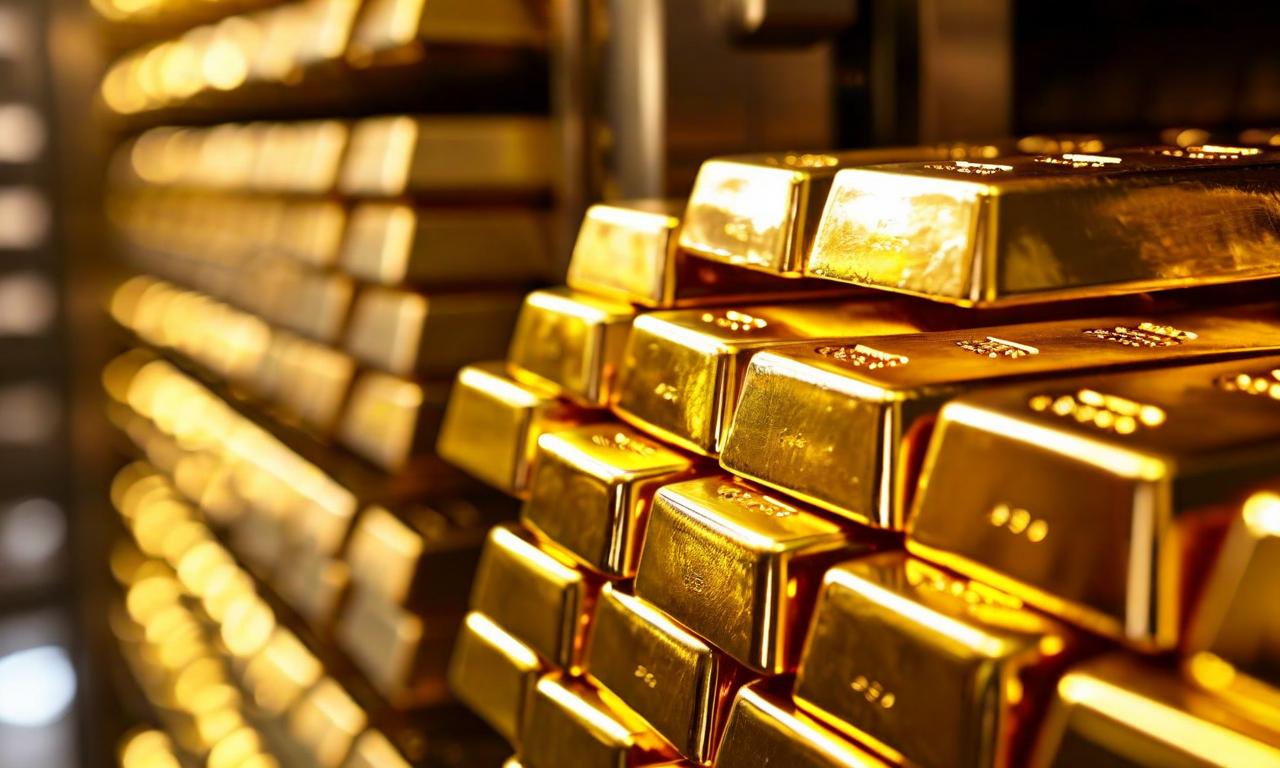Gold Prices Fluctuate Amid Geopolitical Tensions and Market Volatility
Gold prices have shown significant volatility, dropping over 3% this week after a nine-week rally. Spot gold traded near $4,110.00, down from its recent high of $4,381.21 per ounce. Despite this, JPMorgan maintains a bullish outlook, projecting gold to reach an average of $5,055.00 per ounce by Q4 2026. Central banks, particularly in Russia, China, and India, have emerged as leading gold buyers, potentially reducing dollar dependence. The market remains sensitive to geopolitical factors, including US sanctions on Russian oil companies and upcoming US retail inflation data.

*this image is generated using AI for illustrative purposes only.
Gold prices have experienced significant volatility, driven by geopolitical uncertainties, market fluctuations, and forecasts from major financial institutions. This trend is being interpreted by some experts as a potential indicator of changes in the global economic order.
Recent Market Movements
Gold prices have shown considerable fluctuation recently. After experiencing a remarkable surge, gold has seen a decline of over 3% this week, potentially ending its nine-week rally. Spot gold traded near $4,110.00, down from its recent all-time high of $4,381.21 per ounce. The decline is attributed to traders taking profits and growing optimism about a potential U.S.-China trade deal that could ease tensions. ETF outflows reached a five-month low during this period.
Previously, gold prices had rebounded globally after a two-day decline, driven by geopolitical uncertainties stemming from US sanctions on Russian oil companies. On India's Multi Commodity Exchange, gold futures for December delivery increased 2.00% to Rs 124,250.00 per 10 gram. In the US spot market, gold gained 1.11% to $4,145.00 per ounce, while futures on the New York Commodities Exchange rose 2.20% to $4,154.70 per ounce.
The sanctions targeted Lukoil and Rosneft, potentially disrupting oil supply to China. Chinese state oil companies PetroChina, Sinopec, CNOOC, and Zhenhua Oil are reportedly refraining from dealing in seaborne Russian oil amid sanction concerns.
JPMorgan's Bullish Forecast
Despite recent fluctuations, JPMorgan maintains a bullish outlook on gold. The bank projects that gold may reach an average of $5,055.00 per ounce by the end of Q4 2026. JPMorgan cites rising investor demand and central bank buying as key drivers, with central bank purchases expected to average nearly 566 tons quarterly in 2026. The bank maintains gold as its highest conviction long position, pointing to the Federal Reserve's anticipated rate-cutting cycle as a significant factor in the precious metal's potential upward trajectory.
Central Banks' Gold Rush
Central banks, once net sellers of gold in the 2000s, have now emerged as the leading buyers in the market. This shift in strategy is particularly evident in countries like China, India, and Russia, who are strategically using gold to potentially reduce their dependence on the US dollar.
The following table illustrates the significant increase in gold's share of central bank reserves for key countries:
| Country | Previous Gold Share | Current Gold Share |
|---|---|---|
| Russia | 29.50% | 35.80% |
| China | 4.90% | 6.70% |
| India | 9.60% | 13.10% |
| UK | 13.50% | 16.60% |
Market Performance and Outlook
Gold has hit multiple record highs this year, reaching $4,381.21 on a recent Monday. However, the recent 3% decline highlights the metal's susceptibility to market forces and investor sentiment. Investors are closely monitoring US retail inflation data due Friday, as lower CPI could support Fed rate cuts and boost gold prices, while higher inflation might deter rate cuts.
Geopolitical Factors
The 2022 freezing of Russia's central bank assets has highlighted potential risks associated with dollar reserves, demonstrating how they could be impacted by geopolitical conflicts. This event may have accelerated the trend of diversification away from the dollar.
Expert Insight
Tax expert Sujit Bangar describes this trend as a potential warning signal of changes in the global order. The significant accumulation of gold by central banks, coupled with the apparent declining faith in fiat currencies, suggests a possible realignment of global financial strategies.
Conclusion
As central banks continue to increase their gold reserves and potentially move away from traditional dollar reserves, the global financial landscape appears to be undergoing a transformation. With major institutions like JPMorgan forecasting continued growth in gold prices, this shift could have implications for international trade, monetary policy, and geopolitical relations in the coming years. However, recent market volatility serves as a reminder that gold prices remain subject to various economic and geopolitical factors.





























